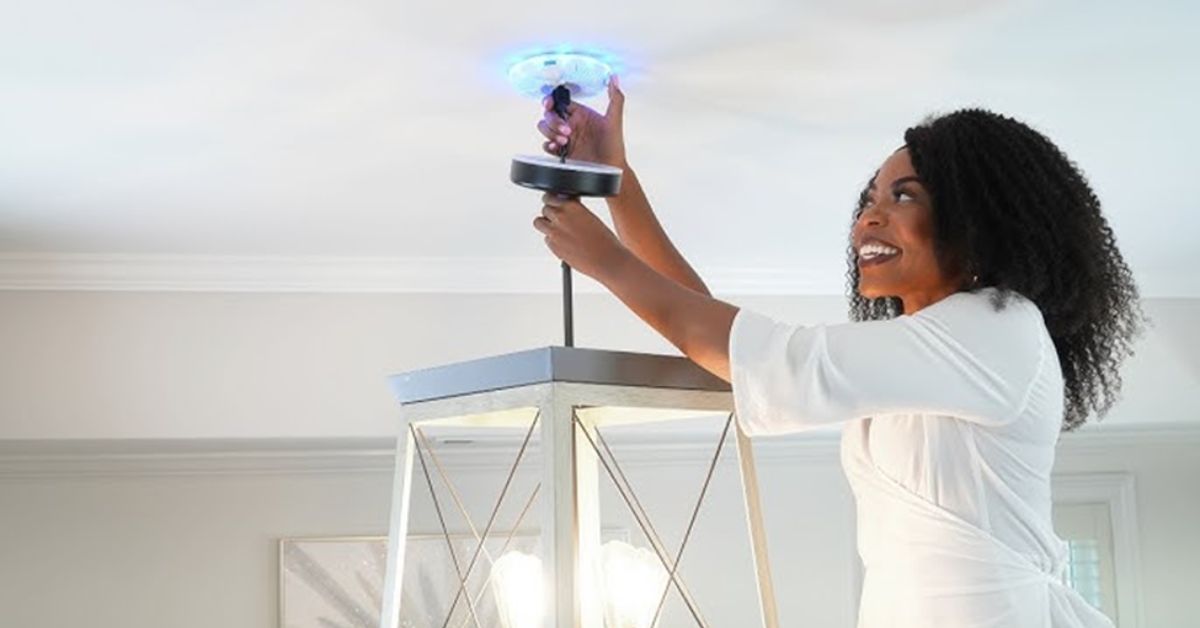If you think simply installing smart lights gives you control over energy wastage and bill costs, it’s time to change your perspective. Perfect control requires the right knowledge of techniques like scheduling, dimming capabilities, and motion sensors; elements that work together to maximize efficiency.
Traditional lighting systems drain energy silently through constant operation, improper brightness levels, and lights left on in empty spaces. This is where energy-saving lighting systems transform your space, offering precise management of illumination while significantly reducing waste.
Having extensive experience in smart lighting implementation, I’ve identified proven techniques that can help you integrate this technology effectively. Let me share advanced methods for maximizing your lighting system’s potential to save energy, lower costs, and create a more efficient environment.
The Impact of Smart Lighting on Energy Efficiency
Switching to smart lighting can significantly reduce energy waste in several ways:
- Automated On/Off Scheduling: Smart lighting systems can be programmed to turn on or off at specific times. This ensures lights are only used when necessary, such as turning off lights in unused rooms.
- Dimming Capabilities: Adjustable brightness levels allow you to use just the amount of light you need, cutting down on excessive energy usage.
- Motion Sensors: With sensors in place, lights automatically turn off when no movement is detected, making them ideal for bathrooms, hallways, and other areas with intermittent use.
Key Features of Smart Lighting Systems
Smart lighting systems are not only energy-efficient but also customizable and user-friendly. Here are some features that make them stand out:
- Remote Control Access: Manage your lighting from anywhere using a smartphone app.
- Integration with Smart Home Devices: Combine lighting with smart thermostats, smart plugs, or security systems for smooth home automation.
- Voice Activation: Use voice assistants like Alexa, Google Assistant, or Siri to control your lights hands-free.
Choosing the Right Smart Lighting Solution
When selecting a smart lighting system, it’s important to choose one that fits your specific needs. Factors to consider include:
- Compatibility: Ensure the system works with your existing devices and smart home ecosystem.
- Ease of Installation: Choose for a system that is easy to set up without requiring complex wiring or additional hardware.
- Energy Efficiency: Look for systems that emphasize energy-saving systems to reduce your electricity bill while being environmentally conscious.
Setting Up Efficient Lighting Control
One of the easiest ways to minimize energy waste is by adopting efficient lighting control. This involves using apps, timers, or automation tools to ensure your lights are only on when needed. For instance, you can create schedules for outdoor lights to turn on at sunset and off at sunrise, or set your indoor lights to mimic natural daylight patterns. Such smart control ensures that energy is used efficiently, without unnecessary waste.
What Does Smart Lighting Give Beyond Energy Savings
Smart lighting does more than save energy. Here are additional benefits:
- Improved Ambience: Adjusting brightness and color can enhance the mood of any space, whether it’s a cozy evening at home or a productive day at work.
- Increased Security: Program lights to turn on and off to simulate occupancy when you’re away, deterring potential intruders.
- Convenience: Forget manual changing of light switches; with automation, everything is handled easily.
Tips to Maximize Energy Savings with Smart Lighting
To get the most out of your smart lighting system, follow these practical tips:
- Use LED Bulbs: Replace traditional incandescent or CFL bulbs with LED alternatives. They consume far less energy and last longer.
- Set Energy Goals: Track your usage through smart apps to identify trends and areas for improvement.
- Combine with Other Systems: Pair your lighting with other lighting systems for a fully integrated approach to reducing energy waste.
- Educate Household Members: Teach everyone in the household how to use the system effectively to avoid unnecessary energy use.
Conclusion
Smart lighting offers an innovative way to cut down on energy waste while adding convenience and style to your home or office. With features like motion sensors, remote controls, and dimming capabilities, you can easily reduce your electricity bills and lower your environmental impact. Whether you’re looking to upgrade your home or improve a commercial space, using smart lighting is a step toward a more sustainable future.
ALSO READ: Window Treatment Ideas for Lofts: High Ceilings and Unique Spaces

